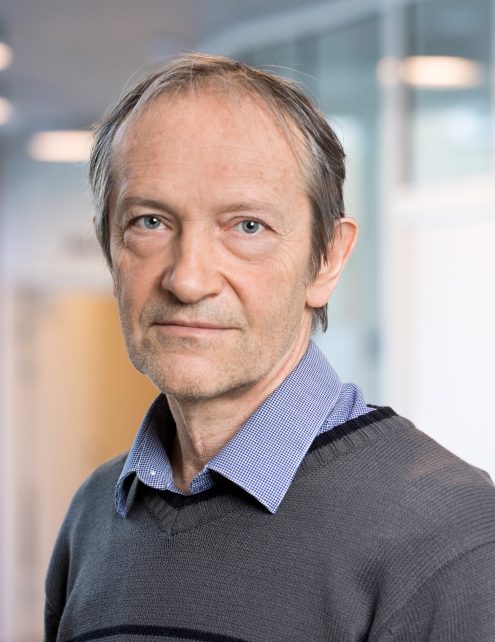New research from CARD published in Nature: Effective cancer medicine works opposite to the way previously believed
Researchers from the DNRF’s Center for Autophagy, Recycling and Disease (CARD), at the Danish Cancer Society’s Center for Cancer Research, offer new explanation of the effect of cancer medicine and the fundamental processes during cell division.

Professor and unit leader Jiri Bartek and senior researcher Apolinar Maya-Mendoza, from the DNRF’s Center for Autophagy, Recycling and Disease (CARD) at the Danish Cancer Society’s Center for Cancer Research, have worked together on a new study that shows how medicine designed to treat breast and ovarian cancer has the opposite effect than previously believed. This finding can potentially lead to improved cancer treatments. The study has been published in the scientific journal Nature Letters.
The body’s cells are constantly exposed to damage and are replaced by new cells with the help of cell division, a process by which one cell divides into two. Cancer cells undergo the same process, but they can divide themselves faster and more often than normal cells. When the body undergoes cancer treatment, a part of the treatment is meant to stop the cancer cells from dividing and thus to stop the cancer from growing and spreading.
Cancer medicines such as olaparib and veliparib are examples of medicaments that have exactly that effect. They are used in the treatment of breast and ovarian cancer, among others, caused by faults in the so-called BRCA genes. Medicines such as these are called PARP inhibitors, and as the name suggests, the medicine works by inhibiting the protein PARP that is a component of the cellular reparation process.
Until now, researchers across the world have believed that the effect behind these PARP inhibitors is due to their prohibition of cancer cells’ (with decreased BRCA) ability to repair DNA damage and thereby block the DNA copy. But the research from CARD shows that quite the opposite is, in fact, happening. Senior researcher Apolinar Maya-Mendoza explained:
“PARP inhibition works by increasing the speed of the DNA copying in the cancer cells. At the same time, mistakes in the DNA that occur during the copying, so-called replication stress that normally works as a messenger, signaling to the cell that it needs to stop its division, are being overlooked. With cancer cells that are missing the BRCA gene, it leads to an accumulation of mistakes in the cell’s genes so that they die.”
Network of proteins controls the speed of the DNA copying process
The new research also shows what role the PARP protein plays when it is not inhibited. The researchers found that PARP is part of a network of proteins that together control how fast the DNA copying progresses. The speed is absolutely the determining factor in the process of copying, since it must not go too fast or too slow. The researchers’ new results show that DNA copying must happen with a speed that lies within a specific interval in order to avoid an increased risk of mistakes occurring in the DNA that can lead either to the development of cancer or to the death of the cells.
These research results from CARD bring new knowledge about cell division, which is one of the most fundamental features of our bodies.
“Our new result is surprising to the scientific world and opens new ways to look at DNA copying and the development of cancer as a disease – and not only cancer caused by mistakes in BRCA,” Jiri said. Maya-Mendoza added:
“By understanding exactly which effect different treatments have on the cancer cells, we become better at determining which treatments – combined, for instance – that work the best. This can lead to new and improved treatments in the future.”
The scientific plublication can be found at Nature here
More about the research can be found at the Danish Cancer Society here
